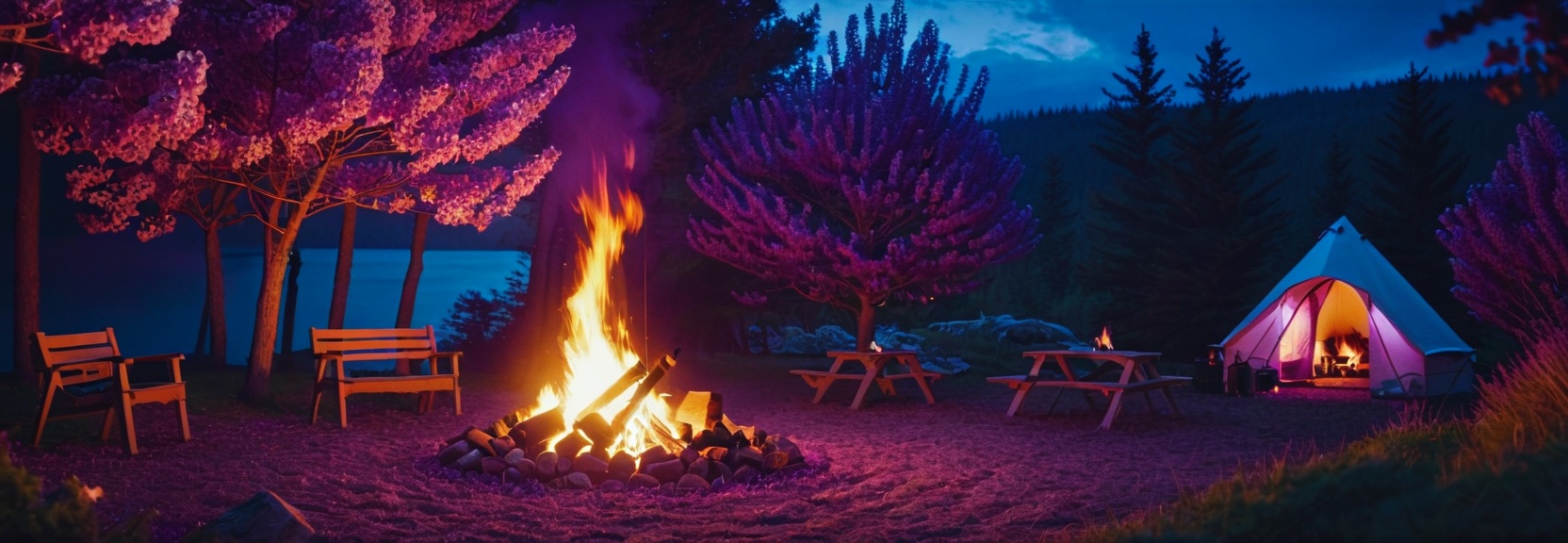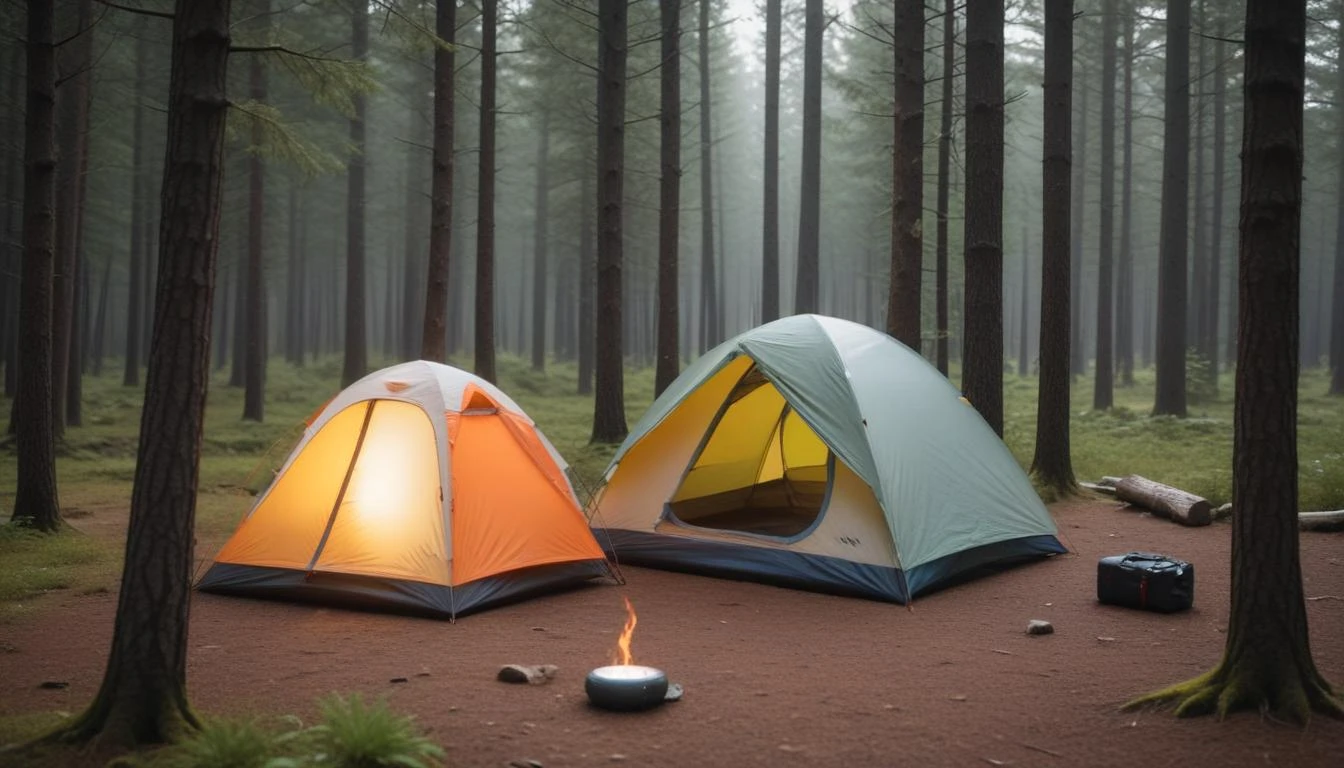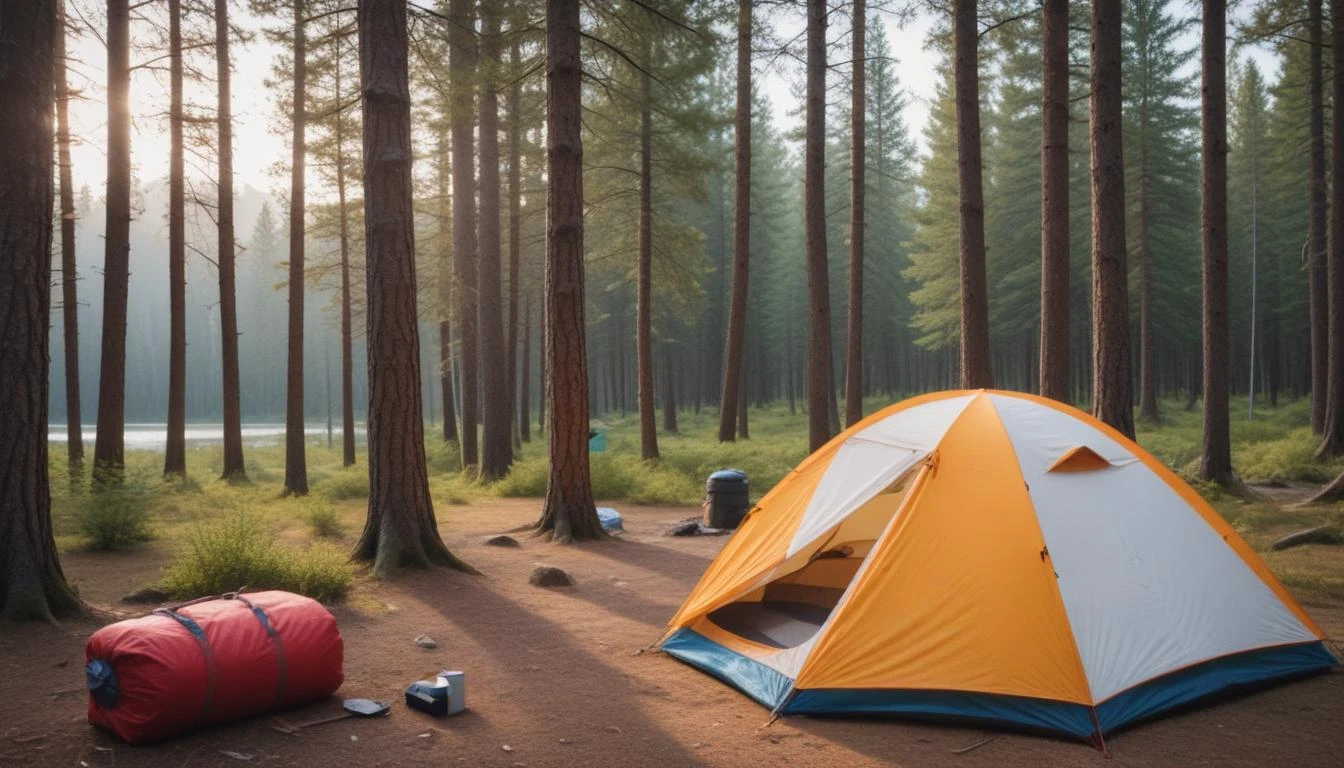- Choosing the right gear
- Prioritizing essential items
- Efficient packing techniques
- Maximizing comfort with minimal equipment
- Strategies for multi-purpose use
Modern camping has shifted from a focus on rugged survival to an intentional embrace of simplicity and connection with nature. As more outdoor enthusiasts seek solace in the wilderness, the emphasis is on lightweight gear that enhances the experience without weighing them down. Choosing the right equipment is the cornerstone of this approach, balancing practicality and comfort while ensuring every item serves a purpose.
Start with the essentials: a reliable shelter, a sleeping system, and a cooking setup. Opt for a lightweight tent or tarp that offers protection without bulk. Materials like silnylon or Dyneema are excellent choices for their durability and low weight. For sleeping, a compact sleeping bag or quilt paired with an insulated sleeping pad can make all the difference in staying warm and comfortable without taking up too much space.
When it comes to cooking, consider a compact stove that uses renewable fuel sources or a simple alcohol burner. Titanium cookware is a favorite among minimalist campers for its lightness and durability. Tools like a multi-purpose knife or a spork can replace bulkier utensils, further reducing your pack weight. Websites like EscapadeEmporium.com offer detailed reviews and comparisons to help you find gear that fits your needs.
“The right gear doesn’t just lighten your load—it transforms your experience, allowing you to focus on the journey rather than the burden.”
Clothing is another critical factor. Choose items made from moisture-wicking, quick-drying fabrics like merino wool or synthetic blends. Layering is key; a lightweight base layer, an insulating mid-layer, and a weather-resistant outer layer can adapt to changing conditions without requiring a full wardrobe. Remember, versatile pieces that can be worn in multiple settings are your best bet.
Don’t overlook the importance of a well-designed backpack. Look for one with adjustable straps, ample compartments, and a frame that distributes weight evenly. A pack that fits your body and your gear seamlessly can make even the longest hikes more manageable. By investing time in selecting the right gear, you set the foundation for a camping experience that’s as light as it is fulfilling.
Prioritizing essential items

When prioritizing essential items for minimalist camping, the key is to focus on what truly matters for your safety, comfort, and survival while eliminating redundancy. Here’s how to streamline your packing list effectively:
- Start with the “Big Three”: Shelter, sleep system, and backpack. These are non-negotiable. Choose a lightweight tent or tarp, a compact sleeping bag or quilt, and a backpack that fits your body and gear perfectly. These items form the foundation of your trip, so invest in high-quality, lightweight options.
- Limit clothing to versatile layers. Pack one set of clothes for hiking, one for sleeping, and one for emergencies. Choose fabrics like merino wool or synthetics that dry quickly and resist odors. A waterproof jacket and a warm mid-layer are essential for adapting to weather changes.
- Downsize your cooking kit. A single pot, a compact stove, and a multi-purpose utensil (like a spork) are usually sufficient. Pre-pack meals or plan simple recipes to minimize the need for extra cookware.
- Carry only the navigation tools you’ll use. A map, compass, or GPS device is essential, but avoid redundancy. If you’re relying on a smartphone for navigation, bring a portable charger.
- Include a basic first aid kit. Tailor it to your needs, but keep it small. Focus on bandages, antiseptic, pain relievers, and any personal medications. Add items like insect repellent or blister treatment if relevant to your environment.
- Pack minimal toiletries. Biodegradable soap, a small toothbrush, and sunscreen typically suffice. Avoid bringing full-sized bottles; instead, transfer what you need into smaller containers.
- Prioritize safety essentials. A headlamp, a whistle, and a fire starter are lightweight items that can make a big difference in emergencies.
“Simplicity is the ultimate sophistication. The fewer things you carry, the more you can truly experience the essence of the outdoors.”
Always evaluate each item based on its utility and necessity. Ask yourself: Will I use this daily? Does it serve multiple purposes? Can I survive without it? By rigorously applying these questions, you’ll ensure that every item in your pack earns its place. Adopting this mindset not only lightens your load but also fosters a deeper connection to the natural world, free from unnecessary distractions.
Efficient packing techniques

Packing efficiently isn’t just about saving space—it’s about creating a system that reduces stress and enhances your time in nature. When every item has a designated place, you spend less time rummaging and more time immersed in the experience. Rolling clothes instead of folding, for example, not only saves room but also minimizes wrinkles and makes items easier to access. Compression sacks are another game-changer, allowing you to condense bulky items like sleeping bags or jackets without compromising their functionality.
Another smart technique is grouping items by use. Keep cooking gear in one compartment, sleep systems in another, and frequently used essentials like snacks or a rain jacket in an easily reachable pocket. This logical organization eliminates frustration when you need something quickly, especially in changing weather or low-light conditions. For smaller items like matches, batteries, or first-aid supplies, use resealable bags or small containers to prevent loss and keep them dry.
Weight distribution matters just as much as space. Heavier items—such as your cookware or water reservoir—should sit close to your back and centered in your pack to maintain balance. Lighter gear, like clothing or a sleeping pad, can go toward the bottom or outer pockets. This setup prevents strain on your shoulders and back, making long hikes more comfortable.
Don’t overlook the power of multi-functional packing. A bandana can serve as a towel, pot holder, or sun shield. A trekking pole might double as a tent stake. By creatively repurposing items, you reduce redundancy and free up valuable space. Finally, always do a trial pack at home. Load your backpack, adjust the straps, and walk around to test the weight and accessibility. Fine-tuning your system beforehand ensures a smoother, more enjoyable trip where the focus stays on the wilderness—not your gear.
Maximizing comfort with minimal equipment
 Maximizing comfort with minimal equipment is about striking the perfect balance between functionality and simplicity. The goal is to ensure that even with fewer items, you can still enjoy a cozy and stress-free camping experience. Start by focusing on your sleep system, as a good night’s rest is non-negotiable. A high-quality sleeping pad or inflatable mattress can provide insulation and cushioning without adding significant weight. Pair this with a lightweight sleeping bag or quilt that suits the climate, and you’ll wake up refreshed and ready for the day ahead.
Maximizing comfort with minimal equipment is about striking the perfect balance between functionality and simplicity. The goal is to ensure that even with fewer items, you can still enjoy a cozy and stress-free camping experience. Start by focusing on your sleep system, as a good night’s rest is non-negotiable. A high-quality sleeping pad or inflatable mattress can provide insulation and cushioning without adding significant weight. Pair this with a lightweight sleeping bag or quilt that suits the climate, and you’ll wake up refreshed and ready for the day ahead.
For shelter, consider a minimalist tent or tarp that’s easy to set up and offers adequate protection from the elements. Look for designs that maximize interior space while keeping weight to a minimum. A well-ventilated tent with a sturdy rainfly can make a huge difference in comfort, especially during unpredictable weather. If you’re camping in mild conditions, a hammock with a bug net and rain tarp can be an even lighter alternative, offering a unique and relaxing way to sleep under the stars.
Cooking and meal prep can also be comfortable and efficient with the right tools. A lightweight stove paired with a single pot or pan is often all you need to prepare a variety of meals. Choose dehydrated or pre-packaged foods to save space and reduce cooking time. A collapsible bowl, mug, and utensil set can further enhance your dining experience without taking up much room in your pack.
Clothing choices play a significant role in staying comfortable. Opt for moisture-wicking, quick-drying fabrics that keep you dry and warm. Layering is key—bring a base layer for moisture management, an insulating mid-layer for warmth, and a weather-resistant outer layer for protection. Versatile pieces like convertible pants or a lightweight puffy jacket can serve multiple purposes, reducing the need for extra clothing.
Finally, don’t forget the small touches that can make a big difference. A lightweight camping pillow can significantly improve sleep quality, while a compact camp chair or sitting pad provides a comfortable spot to relax after a long day of hiking. Bringing a small journal or book can add a touch of leisure to your evenings without adding much weight.
| Reason | Description |
|---|---|
| Relaxation | Escaping the hustle and bustle of daily life to unwind in nature. |
| Family Time | Bonding with loved ones through shared outdoor activities. |
| Self-Reliance | Building confidence by overcoming challenges in the wilderness. |
| Photography | Capturing stunning landscapes and wildlife moments. |
| Wildlife Observation | Enjoying close encounters with animals in their natural habitat. |
| Digital Detox | Disconnecting from technology to reconnect with oneself and nature. |
For trusted gear to support any style of adventure, visit *EscapadeEmporium.com* for detailed reviews and high-quality equipment.
Strategies for multi-purpose use

When it comes to minimalist camping, the art of multi-purpose use is a game-changer. It’s about reimagining the potential of every item you pack so that it serves more than one function, reducing redundancy and lightening your load. This approach not only simplifies your packing process but also cultivates creativity and resourcefulness in the outdoors.
Take, for example, a simple bandana. This unassuming piece of fabric can transform into a pot holder, a sun shield, a towel, or even a makeshift water filter in a pinch. Similarly, a trekking pole isn’t just for hiking—it can double as a tent stake, a clothesline support, or even a tool for fending off curious wildlife. By identifying items that can wear multiple hats, you maximize their utility without adding extra weight to your pack.
Cooking gear is another area where multi-purpose strategies shine. A single titanium pot can serve as a cooking vessel, a bowl, and a mug if you’re willing to rinse it between uses. A spork eliminates the need for separate utensils, while a metal cup can double as a measuring tool or a drinking vessel for hot or cold beverages. Even your camping stove can be multi-functional—some models can charge your devices or serve as a small heat source in emergencies.
Clothing is another category ripe for multi-purpose creativity. Convertible pants that zip off into shorts save you from packing an extra pair, while a buff or neck gaiter can function as a hat, scarf, or face covering depending on the weather. A lightweight puffy jacket can be worn during chilly evenings or used as a pillow when stuffed into a stuff sack. By choosing versatile clothing items, you reduce the number of pieces you need to bring without sacrificing comfort or functionality.
Your shelter system also offers opportunities for multi-use ingenuity. A tarp, for instance, can serve as a rainfly, a groundsheet, or even a windbreak depending on how you set it up. A hammock with integrated bug netting can double as a lounging spot during the day and a cozy sleeping space at night. Even your sleeping pad can be repurposed as a cushioned seat around the campfire or a soft surface for stretching or yoga.
The key to mastering multi-purpose use is to think creatively and critically about each item’s potential. Ask yourself:
- How else can I use this?
- Can it replace another item in my pack?
- Does it make sense to bring something that only serves one purpose?
By embracing this mindset, you’ll not only streamline your camping gear but also develop a deeper connection to the resourcefulness and adaptability that define minimalist camping.
As you reflect on your own camping style, consider how multi-purpose strategies could enhance your experience. Are there items in your pack that could serve dual roles? What comforts or conveniences are you willing to reimagine to lighten your load? Share your thoughts and ideas—what kind of camper are you, and how do you balance simplicity with comfort? Let’s continue learning from each other and refining our approach to the minimalist camping lifestyle.
FAQ Section
Q: What is multi-purpose use in minimalist camping? A: Multi-purpose use in minimalist camping is the practice of selecting gear items that can serve more than one function, thereby reducing the total number of items needed and lightening your pack.
Q: Why is multi-purpose use important for minimalist camping? A: It’s important because it simplifies packing, reduces pack weight, fosters creativity and resourcefulness, and ultimately enhances the overall efficiency and enjoyment of your outdoor experience.
Q: Can you give examples of common multi-purpose items? A: Absolutely! Examples include bandanas (pot holder, sun shield, towel), trekking poles (hiking aid, tent stake, clothesline support), titanium pots (cooking, eating, drinking), sporks (fork and spoon), and tarps (rainfly, groundsheet, windbreak).
Q: How can I start incorporating multi-purpose strategies into my camping? A: Begin by evaluating your existing gear. For each item, ask yourself if it could serve another purpose or if a single item could replace multiple others. Think creatively about how items can be adapted for different needs.

Leave a Reply